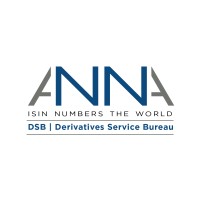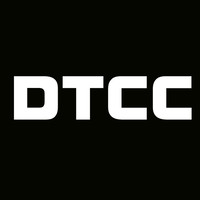In other news, the DTCC adds to its Report Hub service, Adenza is now an official part of a restructured Nasdaq, and Steeleye wants to speed up communication surveillance.
ANNA & DTIF Sign an MOU
 Two key standards bodies are paving the way for a “phased introduction” of new International Securities Identification Numbering (ISIN) tags for crypto assets — an effort that is intended to bring more transparency to securities and crypto markets.
Two key standards bodies are paving the way for a “phased introduction” of new International Securities Identification Numbering (ISIN) tags for crypto assets — an effort that is intended to bring more transparency to securities and crypto markets.
The ISINs to come would create a “mapping between financial assets and their implementation on blockchains,” officials say.
The new ISINs could come via the Association of National Numbering Agencies (ANNA), which oversees the ISO Registration Authority for ISO 6166 International Securities Identification Numbers (ISINs), and another standards group known as the Digital Token Identifier Foundation (DTIF). They have signed a joint Memorandum of Understanding (MOU), the next step after forming a task force in April 2021, officials say.
The MOU allows ANNA, which issues ISINS, and DTIF, which issues DTIs, to create new identifiers.
“The two complementary, interoperable identifiers, with different functions but intrinsically linked, will work together to bring more transparency to the market,” according to the announcement. “Where the ISIN identifies the asset, which has historically always been the case and will continue to be, the DTI uniquely identifies the implementation of the token on a DLT [distributed ledger technology].”
The MOU specifies that “those DTIs included in the DTI register can be issued an ISIN at ANNA’s discretion. This integration will reduce operational complexity and industry costs and provide a clear link between an asset and a digital token(s) that relates to the asset,” officials say.
“By embedding the DTI code within the ISIN code, market participants, and public authorities get the best of both worlds: the ability to identify the digital asset via the ISIN and the individual blockchain implementations of the asset via the DTI registry,” says Denis Dounaev, DTI product owner at DTIF, in a prepared statement.
Etrading Software (ETS) founded the DTIF “to provide ISO standard identifiers for digital assets based on open data principles,” officials say. The collaboration between ANNA and DTIF was started to “ensure a complementary relationship between the ISO 6166 ISIN and ISO 24165 DTI (Digital Token Identifier) standards.
“ANNA’s National Numbering Agencies (NNAs), already issue ISINs for financial and referential instruments and have done so for over thirty years, including ISINs for a number of security tokens,” officials add. “The DTI Foundation was established in 2021 to issue identifiers based on the new ISO standard for Digital Tokens. To date, over 1700 DTIs have been issued. The Task Force has progressed to introduce ISINs assigned by ANNA which are recognized by a new XT ISIN prefix. These are based on DTIs for crypto assets that are not themselves financial instruments.”
DTCC Launches Trade Reporting Analytics & UTI Exchange
 Post-trade infrastructure provider DTCC has launched Trade Reporting Analytics and the UTI Exchange as part of its DTCC Report Hub service.
Post-trade infrastructure provider DTCC has launched Trade Reporting Analytics and the UTI Exchange as part of its DTCC Report Hub service.
“Report Hub is a cloud-based pre- and post-reporting platform that helps firms manage the complexities of meeting multiple derivatives and securities financing transactions mandates across 14 global regimes,” according to the DTCC announcement.
The new Trade Reporting Analytics service offers “reporting parties access to a growing library of over 100 data insights on their own reporting behavior to identify potential errors, highlight trends, and benchmark performance against anonymized peers,” according to the DTCC. “The Trade Reporting Analytics capabilities were “validated by a pilot user group of some of the world’s largest firms, including J.P. Morgan, Nomura Americas Services, LLC and Wells Fargo.”
The new UTI Exchange, which is delivered by an application programming interface (API), “supports the exchange of UTIs [unique transaction identifiers] by counterparties as required by most major derivatives regulatory reporting regimes under existing rules and upcoming rules rewrites. Through a no-touch workflow UTIs can also be automatically enriched onto a trade and submitted using DTCC Report Hub’s Pre Reporting service,” DTCC officials say.
In a statement, Bill Hughes, head of operations, Americas, Nomura Americas Services, says that the firm welcome the launch of Trade Reporting Analytics.
“The tool enables us to evaluate our trade and transaction data for accuracy, completeness, and timeliness across reporting regimes while tracking our performance against an anonymized peer group, a uniquely valuable benefit,” Hughes says.
Nasdaq Finalizes Adenza Purchase & Revamps Structure
 Adenza is officially part of Nasdaq, which has caused the exchanges and technology company to revamp its corporate structure.
Adenza is officially part of Nasdaq, which has caused the exchanges and technology company to revamp its corporate structure.
Nasdaq recently announced that it had completed its acquisition of the risk management, regulatory reporting, and capital markets software provider from Thoma Bravo, a private equity firm focusing on enterprise software companies.
“The acquisition of Adenza represents an important milestone in Nasdaq’s ongoing transformation, accelerating our vision to become the trusted fabric of the financial system. … We are uniquely placed to help our clients navigate rapidly evolving changes in the capital markets and regulatory environment and address their most complex challenges across risk and crime management, compliance, and reporting,” says Adena Friedman, chair and CEO of Nasdaq, in a prepared statement.
In addition to the closing of the acquisition, Nasdaq officials announced a new corporate structure aligned across the following three divisions:
- Capital Access Platforms, “which remains unchanged and incorporates the company’s data and listings, index, and workflow and insights businesses;”
- Market Services, “which will include Nasdaq’s foundational North American and European Trading Services businesses;” and
- Financial Technology, “which will be comprised of two distinct units:
- Capital Markets Technology, which will combine Nasdaq’s Marketplace Technology and Calypso’s Capital Markets solutions, and
- Regulatory Technology, “which will include Nasdaq’s suite of anti-financial crime solutions as well as AxiomSL’s regulatory technology solutions.”
“In conjunction with the completion of the transaction, and in accordance with the terms of the transaction, Nasdaq has appointed Holden Spaht, a managing partner at Thoma Bravo, to serve as a member of Nasdaq’s board of directors, effective immediately. With Spaht’s appointment, the Board of Directors will be expanded to twelve members,” according to Nasdaq.
Nasdaq serves corporate clients, investment managers, banks, brokers, and exchange operators participating in the global capital markets and the broader financial system.
SteelEye Taps A.I. for Faster Communication Surveillance
 Surveillance solutions provider SteelEye has debuted an offering that uses artificial intelligence (A.I.) technologies, specifically large language model (LLM) deep learning algorithms for natural language processing (NLP), officials say.
Surveillance solutions provider SteelEye has debuted an offering that uses artificial intelligence (A.I.) technologies, specifically large language model (LLM) deep learning algorithms for natural language processing (NLP), officials say.
Dubbed Compliance CoPilot, the new solution offers LLM support that is intended “to greatly accelerate the communication surveillance alert review process,” officials say. This will help “to accelerate the response time of compliance officers, enhancing the efficiency of alert management.”
“Compliance CoPilot automates the alert review process, analyzing a vast amount of communications data more efficiently than humans can. Once flagged as suspicious, the email, meeting, attachment, chat, or phone communication is assessed,” according to the vendor’s announcement.
“It offers a risk score, suggested resolution category, and resolution commentary. In all instances, the rationale for its conclusions is given to provide critical evidence to compliance users. As a result, the time spent on both understanding and reviewing the alerts is significantly reduced for compliance officers,” SteelEye officials say.
“Given the multilingual nature of communications across regulated entities, the demand for the platform to be able to assess multiple languages has been addressed,” says Matt Smith, CEO and co-founder of SteelEye, in a prepared statement. “As such, we have developed the capability to analyze communications in 12 languages, while the system returns the insights in English regardless of the languages being used.”
SteelEye officials say that they apply a holistic approach to solving regulatory compliance problems “by capturing, cleansing, indexing and analyzing vast volumes of our clients’ structured and unstructured data from a range of sources.”
Need a Reprint?